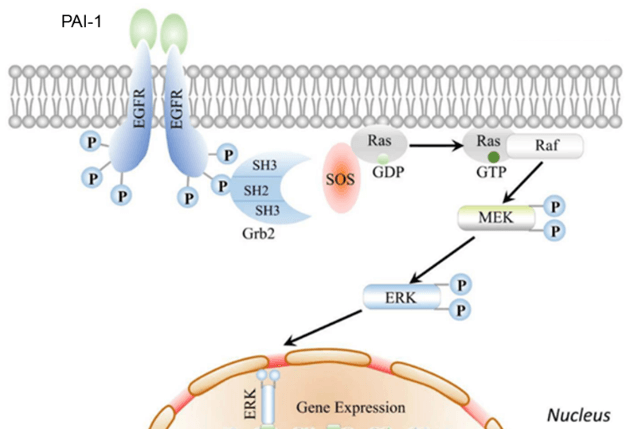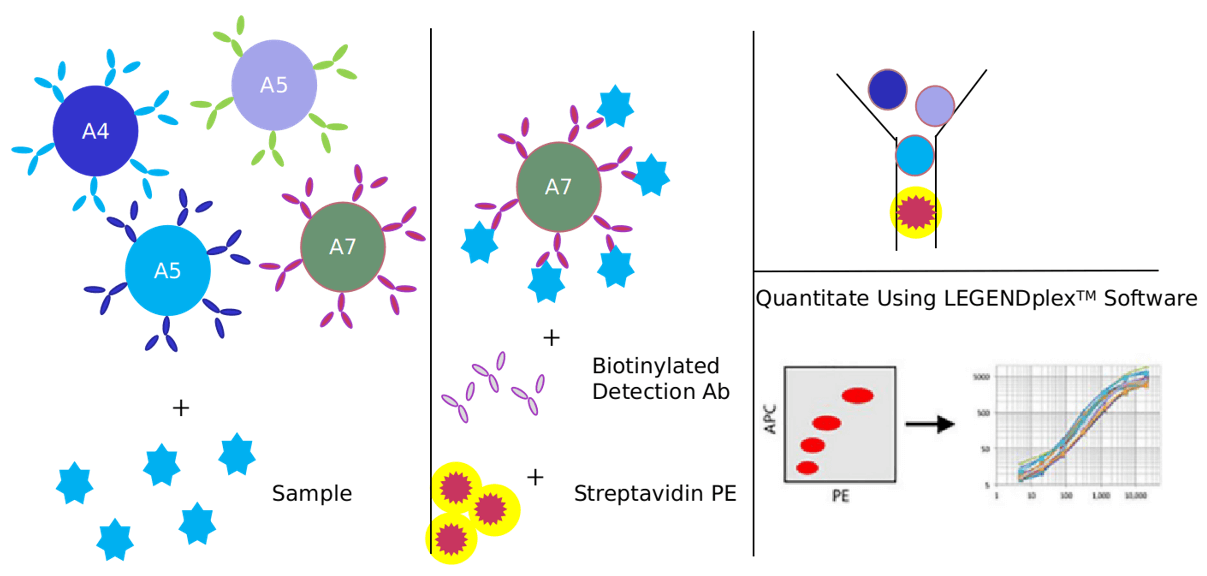PAI-1 signaling pathway
Based on Luminex technology platform, Creative Proteomics provides analysis services for key targets of diabetes signaling pathway.
 (Sapru, A., et al. 2019)Plasminogen activator inhibitor-1 (PAI-1) is the main physiological inhibitor of endogenous plasminogen activator (pa) and is an important active substance in the exogenous activation pathway of the fibrinolytic system and the most important regulator of fibrinolytic activity in vivo. It has been associated with a variety of human diseases and is involved in many cardiovascular risk factors.
(Sapru, A., et al. 2019)Plasminogen activator inhibitor-1 (PAI-1) is the main physiological inhibitor of endogenous plasminogen activator (pa) and is an important active substance in the exogenous activation pathway of the fibrinolytic system and the most important regulator of fibrinolytic activity in vivo. It has been associated with a variety of human diseases and is involved in many cardiovascular risk factors.
PAI-1 is a key regulator of fibrinolysis and coagulation and plays an important pathological role in immune and inflammatory responses.PAI-1 functions as an acute-phase protein during acute lung injury (ALI), inflammation and sepsis. The potential role of PAI-1 in the pathogenesis of lung inflammation is evidenced by its upregulation in various experimental models of ALI Evidence. Furthermore, the concentration of PAI-1 in bronchoalveolar lavage (BAL) fluid from ALI patients has been associated with mortality. Although lipopolysaccharide (LPS)-induced neutrophil recruitment and imbalance of local coagulation and fibrinolytic activity via PAI-1 have been reported, the exact mechanism of PAI-1 involvement in pulmonary inflammation has not been fully elucidated.PAI-1 deficiency may exacerbate LPS-induced acute lung injury in mice by downregulating Toll-like receptor 4 (TLR4) negative regulators and enhancing the TLR4 signaling pathway, but PAI-1 deficiency may be associated with a decrease in PAI-1 in mice.
The PAI-1 signaling pathway plays an important role in regulating the LPS-induced inflammatory response in alveolar macrophages.PAI-1 signaling may promote the expression and activation of TLR4-MD-2/MyD88/NF-KB signaling pathway to exaggerate lung inflammation in vitro. Inhibition of PAI-1 may lead to novel therapeutic approaches against bacterial or LPS-induced lung inflammation.PAI-1 knockdown reduced NF-KB p65 expression after LPS stimulation, whereas PAI-1 overexpression showed the opposite result. It indicates that in the LPS-induced inflammatory response, PAI-1 promotes inflammation through the TLR4/NF-KB pathway in vitro, whereas deletion of PAI-1 resulted in decreased TLR4/NF-KB pathway activity and reduced inflammation.
Our detectable targets:
| PTP | VPS34 | UYRAG | CrkII | IRS1 | MEK6 |
| ANT | PI3K | NFκB | IRF9 | IRSI-4 | p50 |
| LDHA | FIP200 | RIG-1 | AMBRA1 | TRAF6 | p53 |
| LKB1 | ULK | TRAF3 | p38 | SH2 | TRAM |
| Shc | PROLC3 | CAP | RIP1 | p38MAPK | TRIF |
| Erk1 | LC3I | ISGF3 | TRAF5 | MEK3 | IRAK1 |
| PHGDH | PDHK | MSK2 | Gab-1 | IRF5 | ISRE |
| PFK | Grb2 | mTOR | IRS2 | Shp-2 | PKR |
| ULK1 | Bax | TBK1 | MSK1 | TLR3 | |
| c-Myc | VDAC | Vav | p65 | Tak1 |
Technology platform:
We provide Luminex technology for PAI-1 signaling pathway analysis.
Luminex technology is a multifunctional liquid phase analysis platform, which is developed on the basis of high-speed digital signal processing technology, colored microspheres, applied fluidics and laser technology. The core is the use of fluorescent dyes for encoding. By adjusting the different ratios of different fluorescent dyes, more than 100 microspheres with different fluorescence spectra were obtained. The reactions are carried out on microspheres with different fluorescent codes, such as nucleic acid hybridization, antigen-antibody, enzyme-substrate, ligand-receptor binding reactions. Using laser detection technology, qualitative and quantitative analysis of microsphere encoding and reporting fluorescence.
Advantages of PAI-1 signaling pathway detection:
- High sensitivity: The surface area of the microspheres is large, and 100,000 probes can be fixed on each microsphere, which ensures the maximum binding with the target molecules in the sample and improves the detection sensitivity. The lowest detection concentration can reach 0.1pg/mL.
- Strong specificity: Can read the fluorescent signal on a single microsphere, and automatically distinguish between bound and unbound microspheres.
- High accuracy: Without washing, the fluorescence intensity of the reporter molecule on the microsphere is proportional to the bound molecule to be detected. Because the detection range of the Luminex detection platform is large, it does not need to be diluted like ELISA detection, which further reduces errors.

Application of our service:
- Study the regulatory mechanism of PAI-1 signaling pathway in clinical diseases
- Study the influence of various human viruses on the PAI-1 signaling pathway
- Study the influence of carcinogenic drugs or therapies on the signal pathway of PAI-1
Creative Proteomics has developed a signal pathway target detection platform. We are not limited to providing PAI-1 signal path detection services, but can also provide other signal path detection services. If you want to detect other targets, please contact us and we will customize the service for you. Look forward to working with you.
References:
- Sapru, A., M.A. Curley, et al. Elevated PAI-1 is associated with poor clinical outcomes in pediatric patients with acute lung injury. Intensive Care Medicine, 2019, 36: 157–163.
- Kwak, S.H., X.Q. Wang, et al. Plasminogen activator inhibitor-I potentiates LPS-induced neutrophil activation through a JNK-mediated pathway. Thrombosis and Haemostasis, 2018, 95: 829–835.



